World War One: How radio crackled into life in conflict
- Published
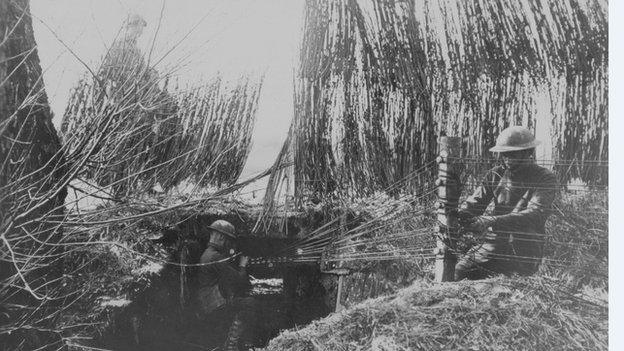
A field radio station, camouflaged with brush-wood and straw, in around 1918
''No comms, no bombs''.
It is as simple as that according Warrant Officer 2 (WO2) Paul Jones, of Merthyr Tydfil, from 1st The Queen's Dragoon Guards.
At the regiment's barracks at Sennelager in Germany he shows me some of the VHF radio sets soldiers keep in their day sacks to the more complex technology used to communicate when troops are in theatre.
"Your radio is one of the most important bits of kit," he said.
"Without it you can't ask or tell somebody to do something and that's vital."
"It takes five weeks to complete a basic radio operations course in the Army, but to be fully geared up on all the communications kit it can take up to three years."
WO2 Jones says it is a technical role which includes writing computer programmes and bears little resemblance to the work carried out by soldiers in World War One.
"In those days they had to just turn a dial, enter in a frequency and press a button to speak," he said.

Telegraph equipment being used in France in 1914
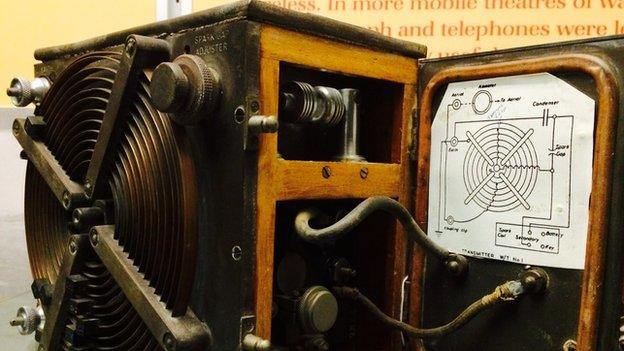
Communication equipment developed during World War One
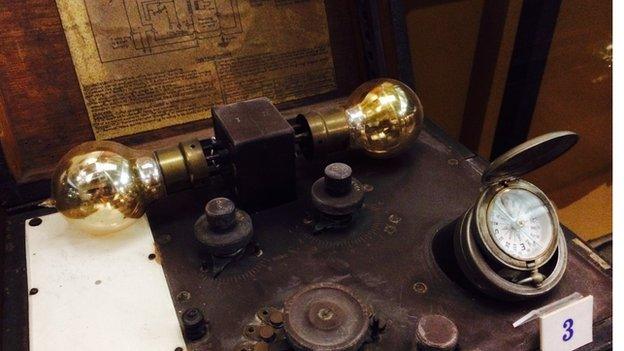
Spanning the war was the telegraph to the early developments in radio
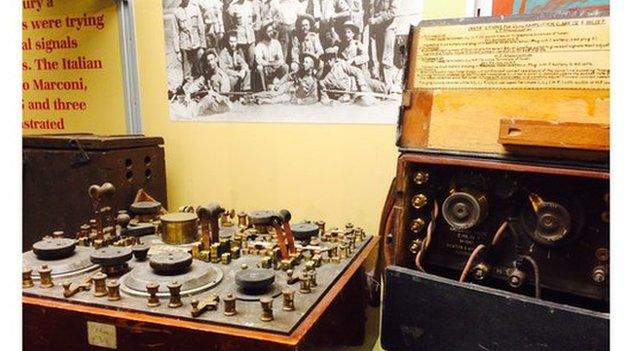
Early equipment is on display at the Royal Signals Museum in Dorset
"But it was the advancements in communications during the four year conflict which laid the foundations for the technology used today."
Colonel Colin Cunningham from The Royal Signals Museum says the Army started the war using telegraph over lines.
"Wagons pulled by horses were used to lay cables over the ground, miles upon miles were laid every day," he said.
The task must have appeared hopeless at times as the cables were under constant bombardment from the shell-fire or damaged by the movement of troops.
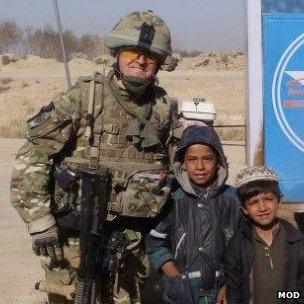
WO2 Paul Jones during an Afghanistan tour
There were other disadvantages to communicating via wires. The Army soon discovered anywhere bare metal touched the earth, messages being sent on them could be intercepted - and they often were. The soldiers who operated the transmitters also found themselves marked out as targets.
'Much more secure'
"The transmitters required antennae, but when you attached it, your location became very visible to the enemy forces," said Col Cunningham.
The use of aircraft and tanks also posed new conundrums. Initially hand signals or squares of white cloth laid out in preformed patterns over the ground were used to communicate messages, but this was cumbersome and unable to adapt quickly to changing circumstances. The solution was radio.
The army already had a small number of wireless sets. Unlike the comms sets used by modern forces, they were not easily portable and required two or three men to move them. Many of the transmitters were manufactured by the British-based inventor Guglielmo Marconi.
According to Col Cunningham the impact of radio changed the nature of warfare. "All of a sudden warfare had become mobile and it was not possible to communicate with moving tanks and aircraft without radio," he said.
"It was hugely important to give instructions or change directives to those men in the tanks and it was really only in the last 100 days of the war that that was seen in large quantities on the battlefield when people were moving around."
As important as communications were to the forces, signallers were often mistrusted by their own men.
"Some of the British listening positions actually listened to their own Army communications to make sure that they were behaving properly and using the correct voice procedure," said Adam Forty from the Royal Signals Museum.
The development of radio is said to have been crucial in the final months of the conflict
"Some of the signallers units, particularly the intercept units, weren't very popular at the front because they were kind of spies on their own army, as much as they were spying on the Germans," he said.
Interception of messages is far less of a worry today, according to WO2 Jones. "We don't worry too much now about people listening in on our systems as they are much more secure than those used a hundred years ago," he said.
Although communications in today's British Army are reliant on satellites, WO2 Jones says if they stop functioning, it's back to basics.
"We still train soldiers up to be able to communicate 'old-school' style, very similar to operations in World War One," he said. "You enter a frequency and go from there."
Communications technology used on the modern battlefield is light-years away from that used by men in the then Great War.
But even by 1918 the kit operated by soldiers was almost unrecognisable to that used in the early days of 1914.
Advancements brought the ability to communicate with moving forces via radio and interception became more difficult.
But the evolution of communications owes as much to the canniness of the German Army and their ability to hijack messages as it does to the ingenuity of the men who invented and developed radio.
- Published18 June 2014
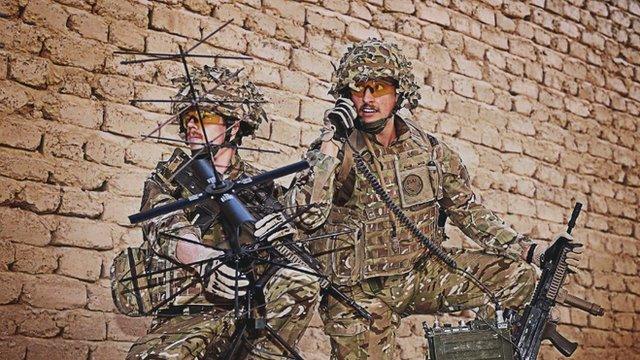
- Published16 June 2014

- Published17 June 2014

- Published15 June 2014
